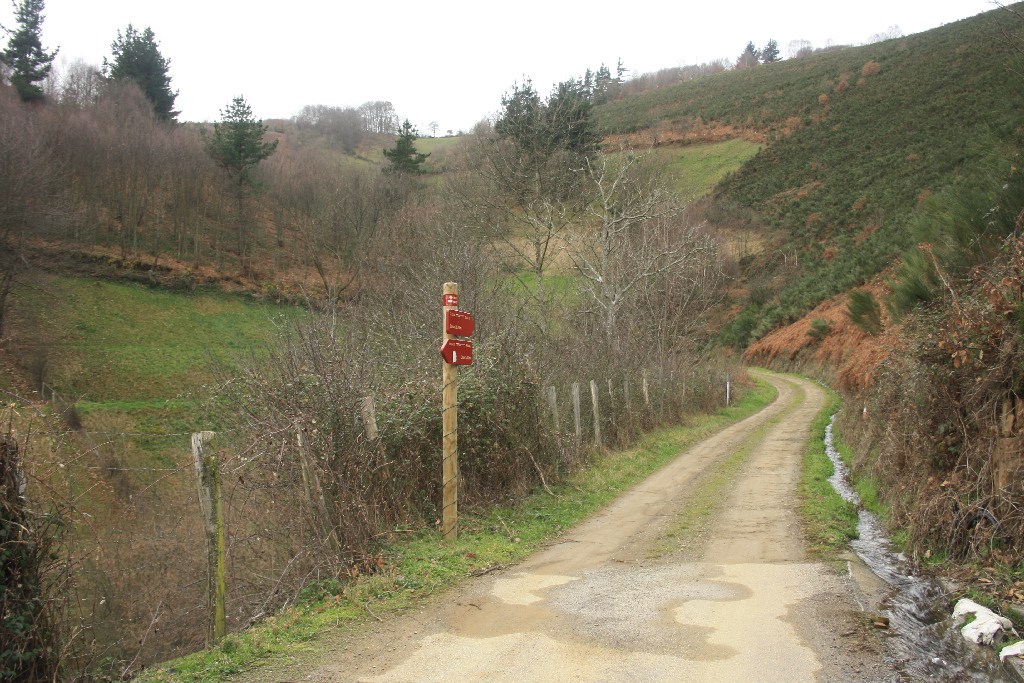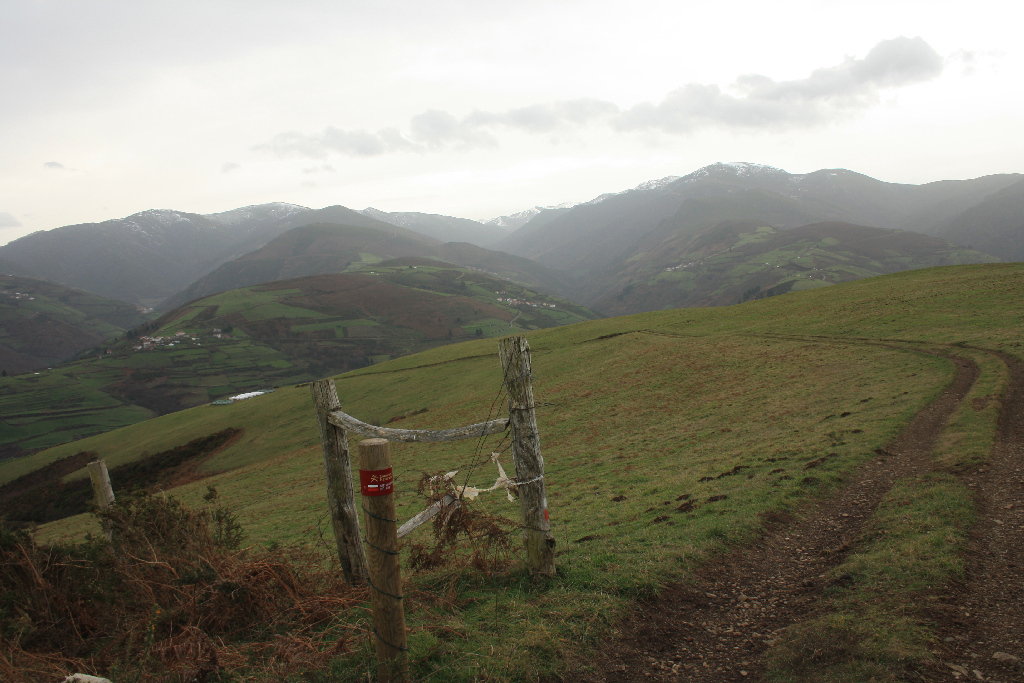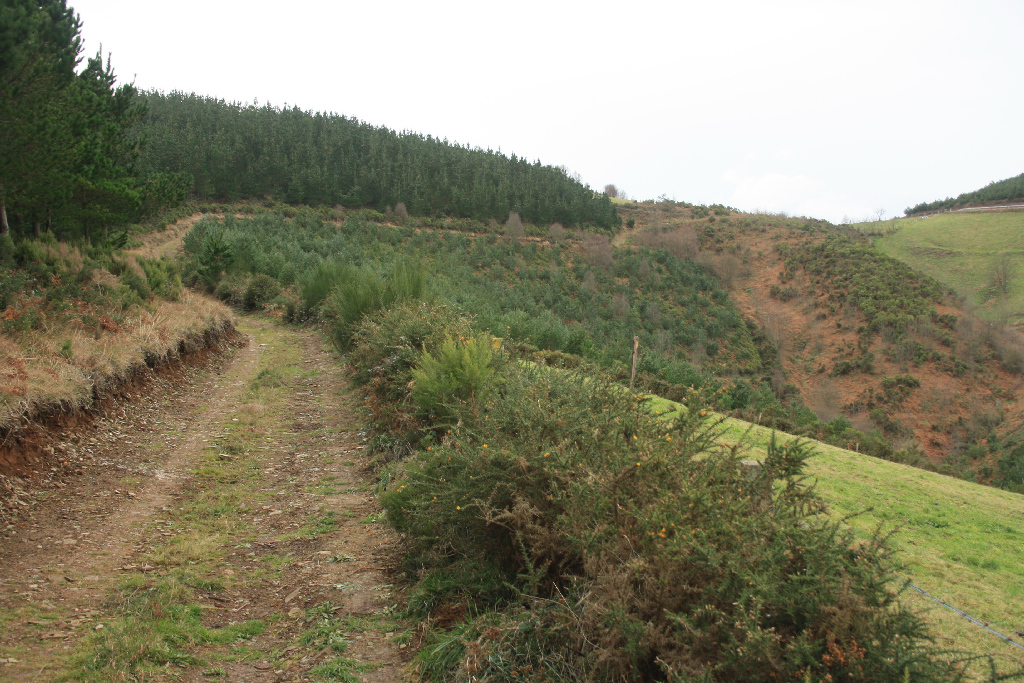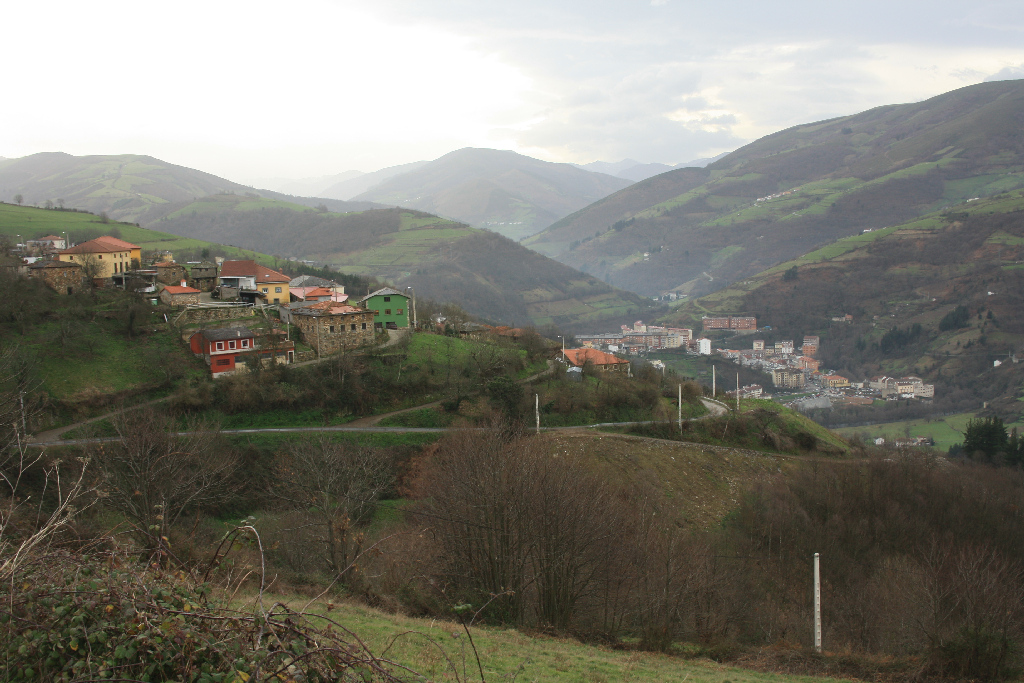- Home
- Rural Development
- Nature Trails
- Nature Trails
- Northwest Sector
- Cordillera Cantábrica. Asturias interior
Stage 22: Onón - Corias
Description

Virgen del Acebo
The Nature Trail traverses the valleys and mountains of Cangas del Narcea County, crossing the mountain ranges of Santa Flor, Pillarma and Acebo, where one of the most venerated shrines in southwest Asturias, the Sanctuary of Virgen del Acebo, patroness of the nomadic herders, is located. Her festivity is commemorated each September 8th with a traditional and multitudinous pilgrimage.
From the town of Onón, the Nature Trail runs first to the south, across Sierra de Santa Flor, to Porley, where it turns west, crossing the northern part of Sierra del Acebo, then through Sierra de la Pillarma to Corias. The route starts at the road to Onón, where the start panel is located. At the edge of the town, the route turns left and climbs down to the River Onón.
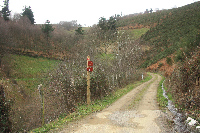
The next stretch heads south along the road, passing through the villages of Luarnes and Valleciello. Past Valleciello, the route turns off the road to the left, and climbs up a dirt track to the pastures of Sierra de Santa Flor. Further on to the south of these pastures, several villages dot the landscape of Sierra Maldita, in the Junqueras River Valley, and behind them, the Sierra de la Serrantina.
Leaving the meadows behind, the route descends to Porley, where the second westbound stretch begins. The route crosses Porley and veers right onto the road that crosses the River Antrago and heads along the slopes of Sierra del Acebo. For several kilometres, the route runs along the road, through meadows and groves of chestnut (Castanea sativa), ash (Fraxinus angustifolia) and alder (Alnus glutinosa), overlooking the Antrago River Valley.
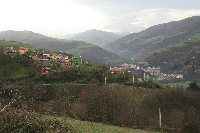
The road passes through Castro de Sierra, and below Villajimada. Before reaching the town of Villalar, the route turns left and begins to climb a dirt track. From this point, the route overlaps with the GR-203 Trail. The dirt road climbs up the steep slope of Sierra de la Pillarma, amidst forests of radiata pine (Pinus radiata) and Scots pine (Pinus sylvestris), towards Cima del Cuetu.
At Cima del Cuetu, the route comes out onto a road and begins to descend along the dirt track on the opposite side. It continues to descend until it reaches the village of Vallinas, where it turns onto a path to the right that leads to Corias.
This path leads to the trail end of this section, next to the Monastery of San Juan Bautista de Corias, opposite the AS-15 and near the River Narcea.
Sites of interest
Profile
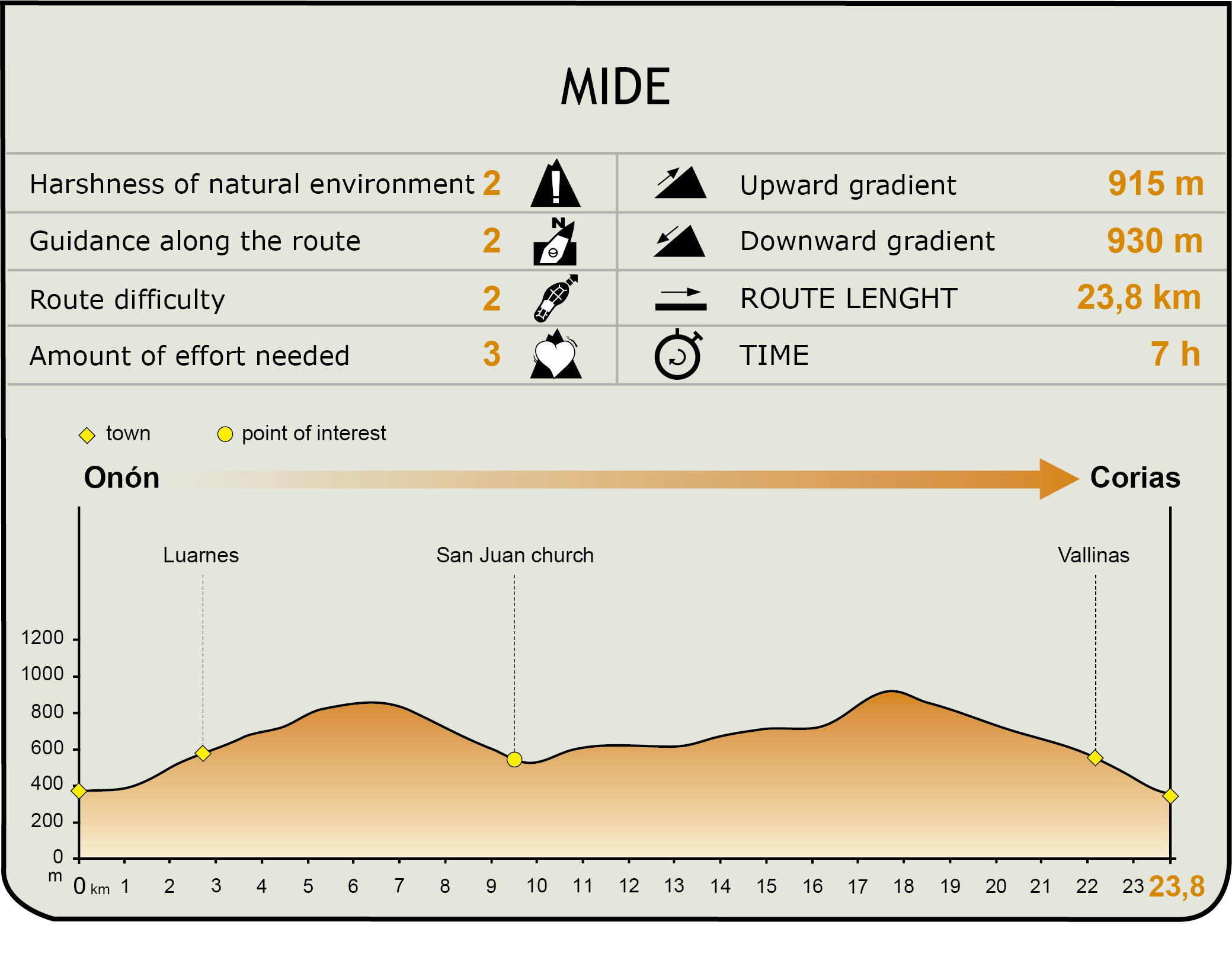
MIDE (Method for the Information of Excursions)
Featured
Further information
Santuario del Acebo
Near the Nature Trail, nestled in the eponymous mountain, is the Sanctuary of Virgin del Acebo, venerated by nomadic herders. Each September 8th, a multitudinous pilgrimage commemorates the Day of Promises, a deeply rooted tradition of southwest Asturias. In the past, this pilgrimage marked the end of the time the herders spent in the summer pastures. Today, it attracts people from all over the district, who come to the Santuario del Acebo to make their offerings and promises, and spend the rest of the day with a picnic, a traditional pastime in Asturias.
The shrine was built in the sixteenth century after several miracles were attributed to the Virgin del Acebo. Here stood a former chapel with a 13th century Romanesque sculpture of the Virgin Mary, which is still worshiped in the temple, although the image was altered in the seventeenth century.
The current sanctuary was built in 1590. It consists of a main building with a single Latin cross nave and several side chapels, and a tower in the front, the lower part of which is an open portico with three large arches. The sacristy was added to the southeast corner. Several relevant Mannerist altarpieces can be found inside the temple. The baroque-style altarpiece was carved by Manuel Ron, between 1687 and 1691, and gilded by Juan Menéndez Acellana in 1709. Both artisans lived in Cangas.
Monastery of San Juan Bautista
Known as the “Asturian Escorial”, the origin of the Monastery of Corias can be traced back to the eleventh century. It was founded in 1022 by the powerful Count Piniolo Jiménez and his wife, Aldonza Muñoz. The construction was completed in 1043 and the monastery was populated by Benedictine monks. The monastery had its heyday in the twelfth and thirteenth centuries. It owned most of the lands of western Asturias and even some in the neighbouring province of León. In the sixteenth century, the Romanesque church was replaced by a Renaissance temple built in the austere classicist Herrera-style.
In 1773, a huge fire gutted most of the building, which was subsequently rebuilt. Only the church was spared. Thus, the current four-storey monastery, in neoclassical style, was built under the direction of Miguel Ferro Caaveiro, a Galician architect. The main façade is in white marble from the nearby quarries of Rengos.
Of the original monastery there only remains the Romanesque floor plan, which consists of a single nave and three apses, located within the walls of the monastery and courtyard. One of the chapels within the temple holds a 12th century image of Christ, known as “El Cristo de la Cantonada”, one of the most outstanding wooden statures of the Asturian Romanesque.
Over the last century, the Monastery of San Juan Bautista has been a school and a novitiate. It is now home to an interesting natural history museum with many mounted animals. This monastery, the largest monastic building in Asturias, was partially renovated in 1986 and is currently undergoing restoration work to be transformed into a Parador.
